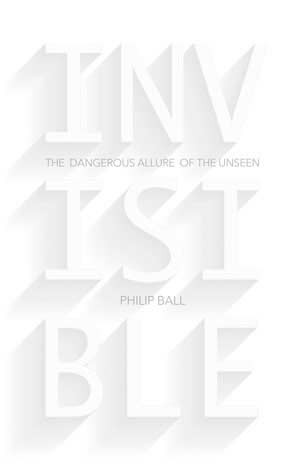
Invisible: The Dangerous Allure of the Unseen by Philip Ball
Invisible presents the first comprehensive survey of the roles that the idea of invisibility has played throughout time and culture. This territory takes us from medieval grimoires to cutting-edge nanotechnology, from fairy tales to telecommunications, from camouflage to early cinematography, and from beliefs about ghosts to the dawn of nuclear physics and the discovery of dark energy. We need to attend to many voices: to Plato and Shakespeare, to James Clerk Maxwell and Victorian music-hall magicians. We will discover new worlds: some of them already known, some sheer fantasy, others whose existence has been asserted but is yet to be proved.
Science is said to be on the threshold of achieving the ancient dream of making objects invisible. But the stories that we have told about invisibility are not about technical capability but about power, sex, concealment, morality and corruption. Precisely because they refer to matters that lie beyond our senses, unseen beings and worlds have long been a repository for hopes, fears and suppressed desires. Ideas of invisibility are, like all ideas rooted in legend, ultimately parables about our own potential and weaknesses.
BUY ON AMAZON
As well as providing a cultural history of a popular idea, Invisible presents many stories for the first time to a general audience: for example, medieval priests blaming their misdeeds on invisible spirits, the Cock Lane ‘ghost fraud’ that fooled Samuel Johnson, the nineteenth-century “Invisible Woman” shows, Victorian scientist William Crookes’ efforts to detect invisible psychic forces with tiny windmills, novelist Edward Bulwer-Lytton’s bizarre belief that he could pass unseen in front of house guests in his dressing gown, and the British forces’ attempts to harness invisibility magic to hide tanks and ships in the Second World War.
Invisible shows what our age-old fantasies about what lurks unseen, and whether we can enter that realm ourselves, truly say about us.
Published by Bodley Head/Chicago University Press, (Autumn 2014)
hardcover 978-0-226-23889-0
Now available in paperback (Vintage, 2015).


